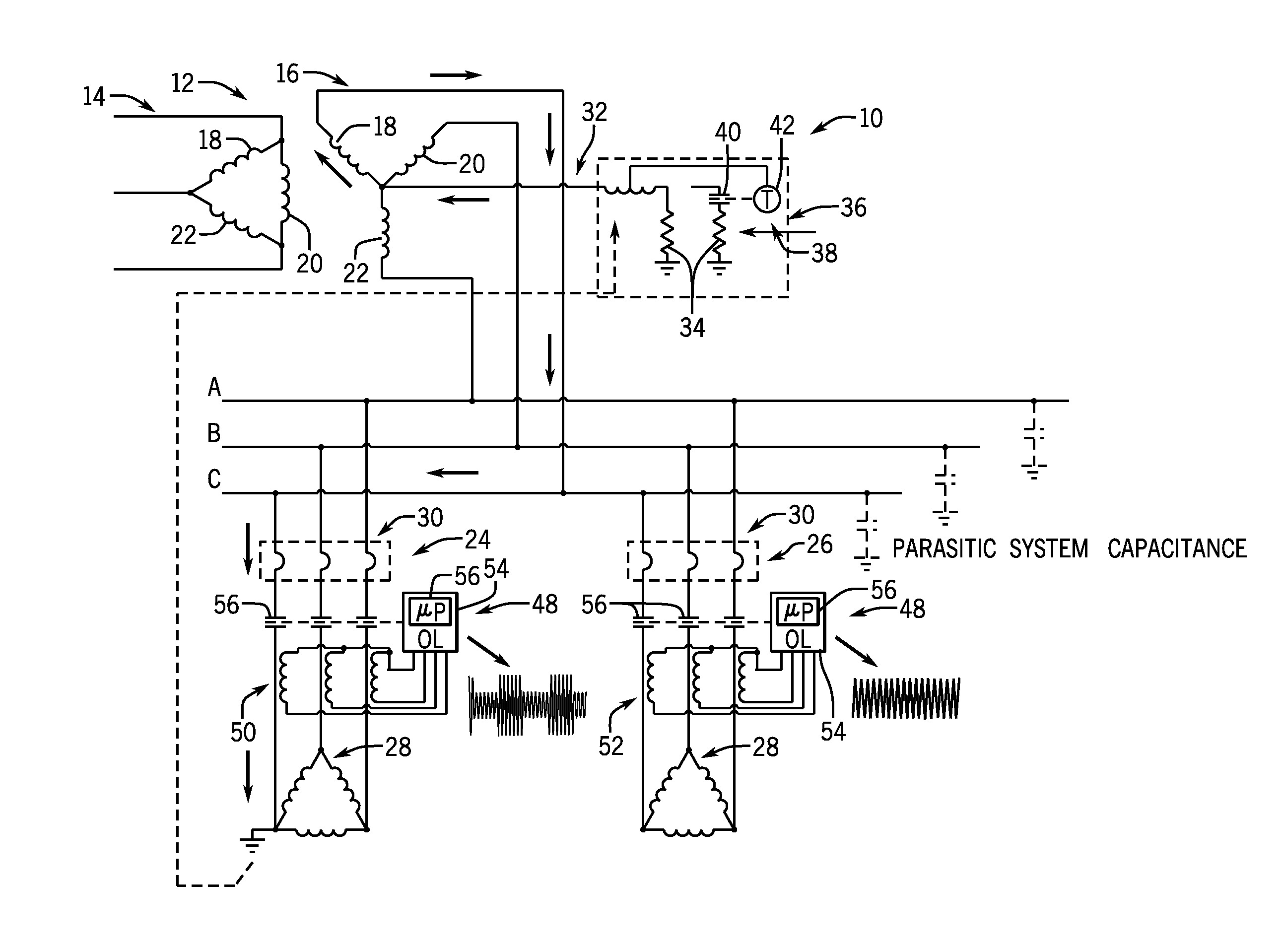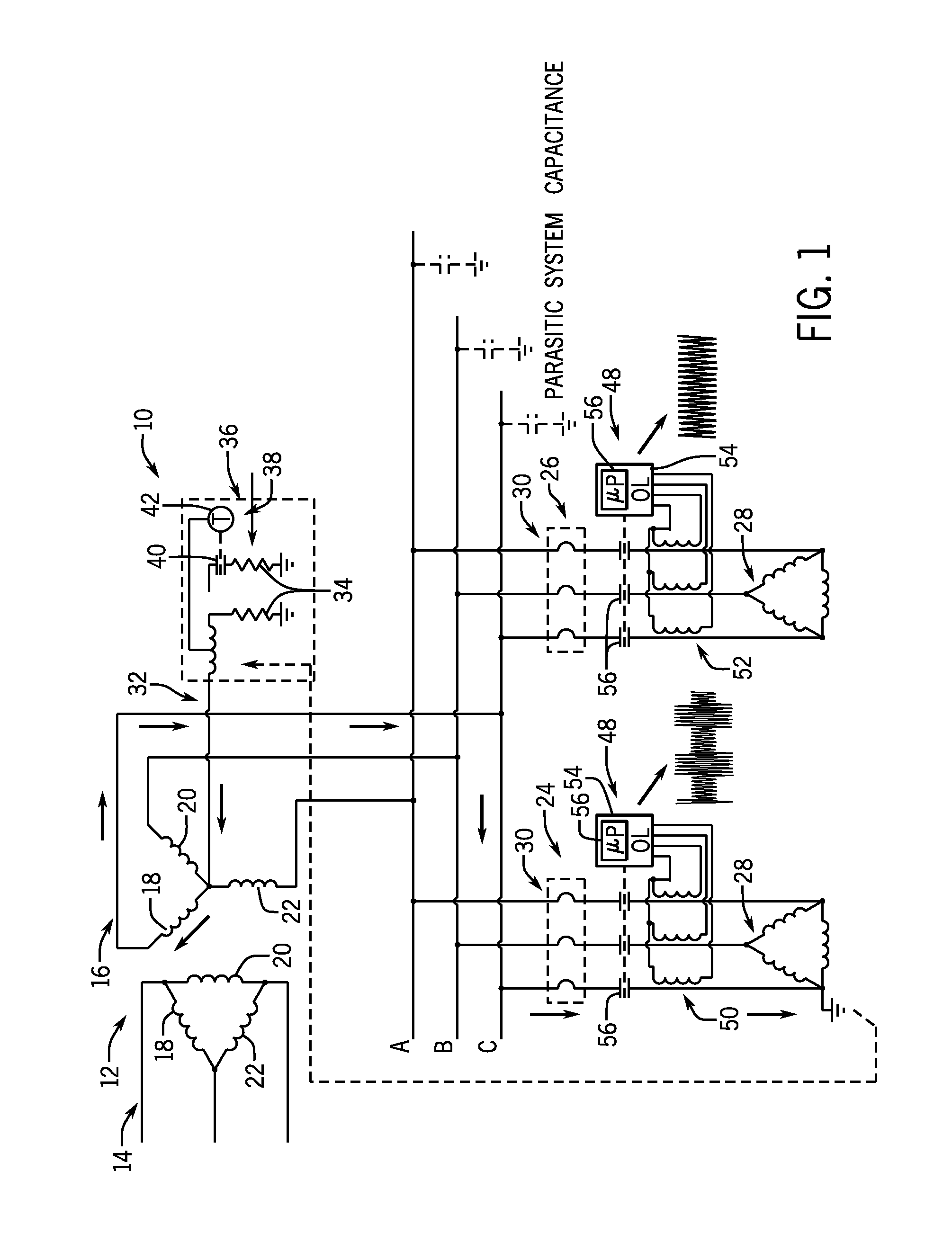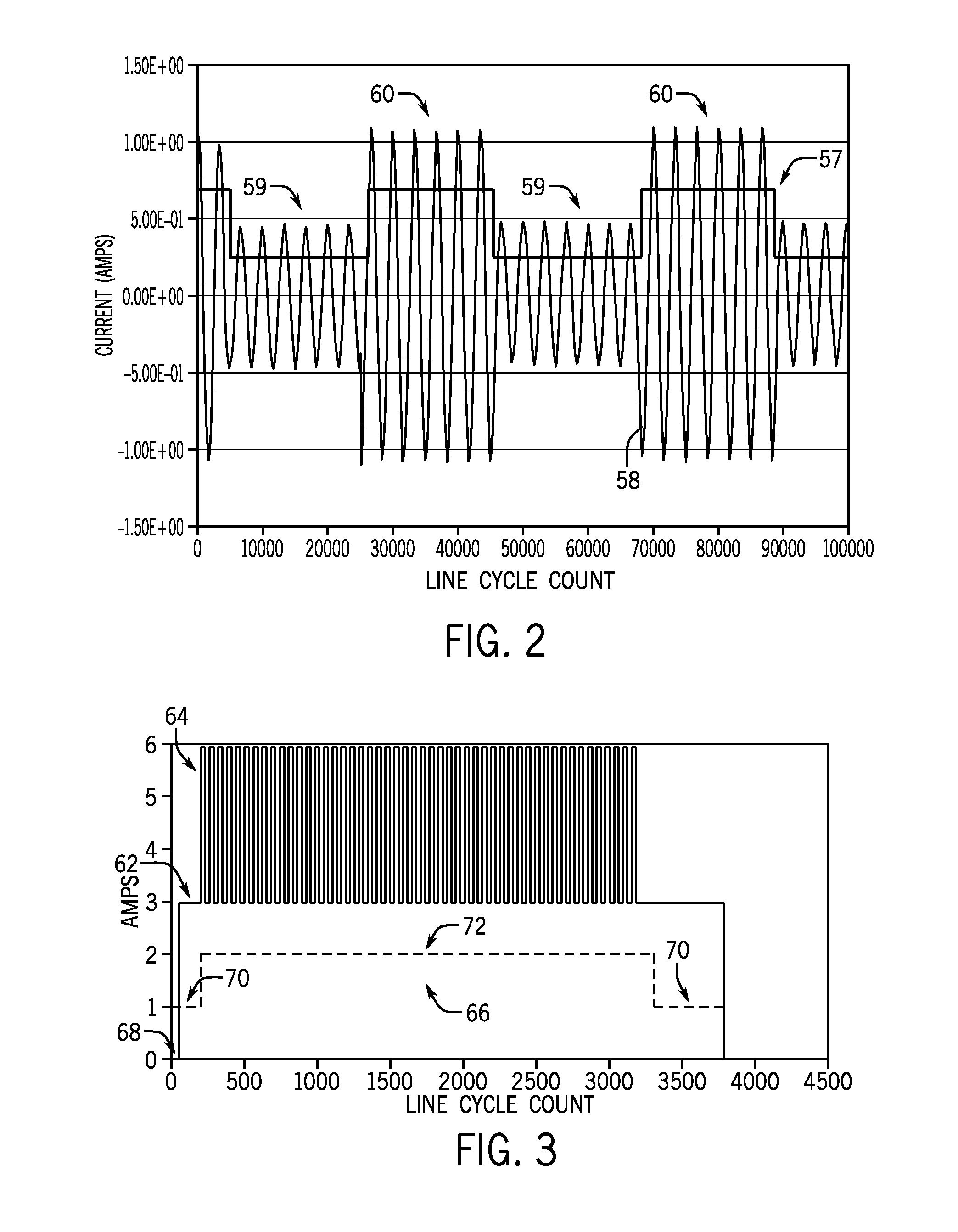System and method for pulsed ground fault detection and localization
a pulsed ground and fault detection technology, applied in the direction of fault location, fault location, conductor type, etc., can solve the problems of large fault current, large fault current, and undesirable condition of ground faul
- Summary
- Abstract
- Description
- Claims
- Application Information
AI Technical Summary
Benefits of technology
Problems solved by technology
Method used
Image
Examples
Embodiment Construction
[0022]Embodiments of the invention relate to a system and method for detecting and locating HRGFs in a power distribution system and protecting the power distribution system from such ground faults upon detection thereof. The system and method for detecting and locating these HRGFs may be utilized in power distribution systems encompassing a plurality of structures and control schemes, and thus application of the invention is not meant to be limited strictly to power distribution systems having the specific structure described here below.
[0023]Referring first to FIG. 1, according to an exemplary embodiment of the invention, a power distribution system 10 is provided with which embodiments of the invention may be implemented. The system 10 includes a power transformer 12 having an input side 14 and an output side 16. The power transformer 12 comprises three phases, i.e., a first phase 18, a second phase 20, and a third phase 22 that are coupled, in the example of FIG. 1, per the angl...
PUM
 Login to View More
Login to View More Abstract
Description
Claims
Application Information
 Login to View More
Login to View More - R&D
- Intellectual Property
- Life Sciences
- Materials
- Tech Scout
- Unparalleled Data Quality
- Higher Quality Content
- 60% Fewer Hallucinations
Browse by: Latest US Patents, China's latest patents, Technical Efficacy Thesaurus, Application Domain, Technology Topic, Popular Technical Reports.
© 2025 PatSnap. All rights reserved.Legal|Privacy policy|Modern Slavery Act Transparency Statement|Sitemap|About US| Contact US: help@patsnap.com



